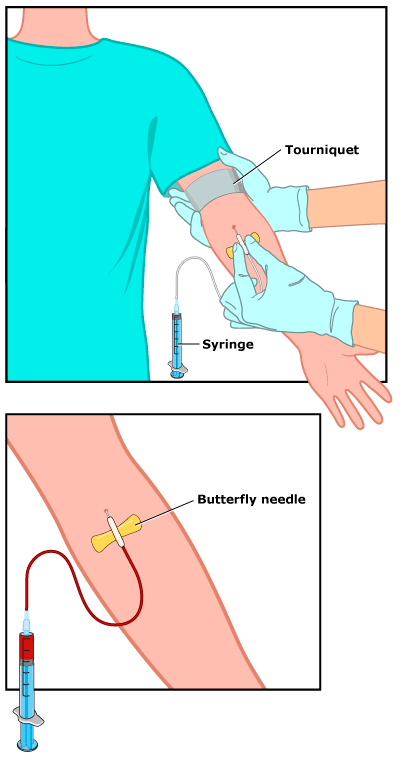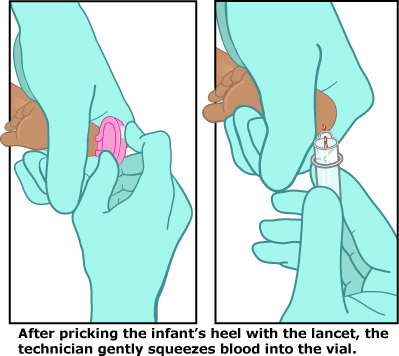Blood Test: T4 (Thyroxine)
Article Translations: (Spanish)
What It Is
A T4 test measures the blood level of the hormone T4, also known as thyroxine, which is produced by the thyroid gland and helps control metabolism and growth. The T4 test is performed as part of an evaluation of thyroid function.
Two blood tests may be performed as part of a T4 test:
- total T4, which measures the entire amount of thyroxine in the blood, including the amount attached to blood proteins that help transport the hormone through the bloodstream
- free T4, which measures only the thyroxine that's not attached to proteins (this is the portion of T4 in the blood that's available to affect the functioning of many types of body cells)
Why It's Done
Doctors may order the T4 test if symptoms suggest any kind of thyroid disorder. For example, an overactive thyroid, called hyperthyroidism, is typically associated with symptoms like weight loss, a fast heart rate, and sweating.
An underactive thyroid, called hypothyroidism, may cause symptoms such as weight gain, fatigue, and feeling cold. Newborns are routinely screened for hypothyroidism, which can cause serious medical problems if left untreated.
Preparation
No special preparations are needed for this test. However, certain medications, including seizure medication, cardiac drugs, steroids, birth control pills, and even aspirin can affect the results, so it's important to tell the doctor about any medication your child is taking.
On the day of the test, having your child wear a T-shirt or short-sleeved shirt can make things easier for the technician drawing the blood.
The Procedure
A health professional will usually draw the blood from a vein. For an infant, the blood may be obtained by puncturing the heel with a small needle (lancet). If the blood is being drawn from a vein, the skin surface is cleaned with antiseptic, and an elastic band (tourniquet) is placed around the upper arm to apply pressure and cause the veins to swell with blood. A needle is inserted into a vein (usually in the arm inside of the elbow or on the back of the hand) and blood is withdrawn and collected in a vial or syringe.
After the procedure, the elastic band is removed. Once the blood has been collected, the needle is removed and the area is covered with cotton or a bandage to stop the bleeding. Collecting blood for this test will only take a few minutes.


What to Expect
Either method (heel or vein withdrawal) of collecting a sample of blood is only temporarily uncomfortable and can feel like a quick pinprick. Afterward, there may be some mild bruising, which should go away in a few days.
Getting the Results
The blood sample will be processed by a machine. The results are usually available after a few hours or the next day.
In general, high T4 results may indicate hyperthyroidism and low T4 results may indicate hypothyroidism. However, in order for doctors to diagnose the specific type of thyroid problem, a more complete picture is obtained by performing the T4 test with other thyroid tests, such as those that measure thyroid-stimulating hormone (TSH), T3 (triiodothyronine), and thyroid antibodies.
Risks
The T4 test is considered a safe procedure. However, as with many medical tests, some problems can occur with having blood drawn. These include:
- fainting or feeling lightheaded
- hematoma (blood accumulating under the skin causing a lump or bruise)
- pain associated with multiple punctures to locate a vein
Helping Your Child
Having a blood test is relatively painless. Still, many kids are afraid of needles. Explaining the test in terms your child can understand might help ease some of the fear.
Allow your child to ask the technician any questions he or she might have. Tell your child to try to relax and stay still during the procedure, as tensing muscles and moving can make it harder and more painful to draw blood. It also may help if your child looks away when the needle is being inserted into the skin.
If You Have Questions
If you have questions about the T4 test, contact your doctor.
Note: All information is for educational purposes only. For specific medical advice, diagnoses, and treatment, consult your doctor.
© 1995-2024 KidsHealth ® All rights reserved. Images provided by iStock, Getty Images, Corbis, Veer, Science Photo Library, Science Source Images, Shutterstock, and Clipart.com

